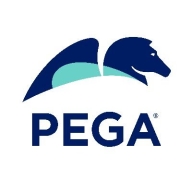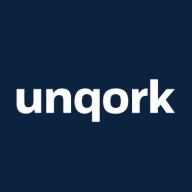

Pega Platform and Unqork compete in the enterprise technology solutions category, particularly in providing robust, scalable platforms for application development and process management. Pega Platform has the upper hand in case management and complex workflow automation, while Unqork shines in enterprise integrations and UI capabilities.
Features: Pega Platform offers extensive case management, rapid application development through low-code capabilities, and effective omnichannel customer engagement. Unqork provides seamless enterprise integrations, advanced AI features with natural language processing and chatbots, and a flexible no-code environment for rapid development.
Room for Improvement: Pega Platform could enhance its UI and AI/ML functionalities and improve technical support responsiveness, especially during version transitions. Unqork faces challenges in performance optimization with complex layouts and lacks robust mobile application support while needing improvements in analytics and offline utility.
Ease of Deployment and Customer Service: Pega Platform offers versatile deployment options including on-premises, hybrid, and public cloud setups, although its technical support can be slow in critical situations. Unqork provides ease of setup primarily in the public cloud but has limited quick-response technical support.
Pricing and ROI: Pega Platform operates on a higher-cost flexible licensing model that can be prohibitive for smaller companies, justified by significant ROI in large enterprises. Unqork is generally more cost-effective with customizable pricing, but certification costs may add expenses. Both platforms deliver notable ROI, with Pega excelling in process management for large operations, while Unqork offers swift solution deployment.


Pega Platform facilitates business process management, case management, and workflow automation for industries like banking, insurance, and healthcare. It supports digital transformation and customer service enhancements with its low-code capabilities and seamless integrations.
Pega Platform enables users to create efficient systems for case management, financial operations, and digital transformations. It provides tools for client onboarding, quoting, claims processing, customer experience improvements, and content management. Pega's low-code approach allows for the automation of complex processes, making it suitable for enterprises looking for adaptability and rapid deployment. While it offers strong real-time analytics and decision automation, users acknowledge challenges in user interface, integration, and performance aspects. High costs and a learning curve need attention, and enhancements in AI features and cloud services are desired.
What are the key features of Pega Platform?In banking, Pega Platform automates loan processing, accelerates customer onboarding, and manages compliance. Insurance companies benefit from streamlined claims processing and policy management. Healthcare sectors use the platform for patient engagement and care coordination, enabling organizations to adapt quickly to changing industry requirements.
Unqork is a no-code application platform tailored for businesses looking to build and manage complex applications without traditional coding. It simplifies app development, enhancing agility and reducing time to market.
Unqork provides a visual development environment that allows businesses to innovate without relying on traditional IT resources, leading to faster deployment and reduced costs. Users can rapidly prototype solutions in a drag-and-drop interface, making it accessible for technical and non-technical stakeholders. The platform boasts strong capabilities in enterprise-grade security, compliance, and scalability, ensuring it's equipped to handle high-demand business applications.
What are the valuable features of Unqork?Unqork finds applications across sectors like finance, healthcare, and insurance, where compliance and scalability are critical. In the financial industry, its robust security features make it ideal for developing secure transactional applications. Healthcare organizations use it to streamline patient data management, while insurance companies leverage it to automate claims processing and underwriting.
We monitor all Rapid Application Development Software reviews to prevent fraudulent reviews and keep review quality high. We do not post reviews by company employees or direct competitors. We validate each review for authenticity via cross-reference with LinkedIn, and personal follow-up with the reviewer when necessary.